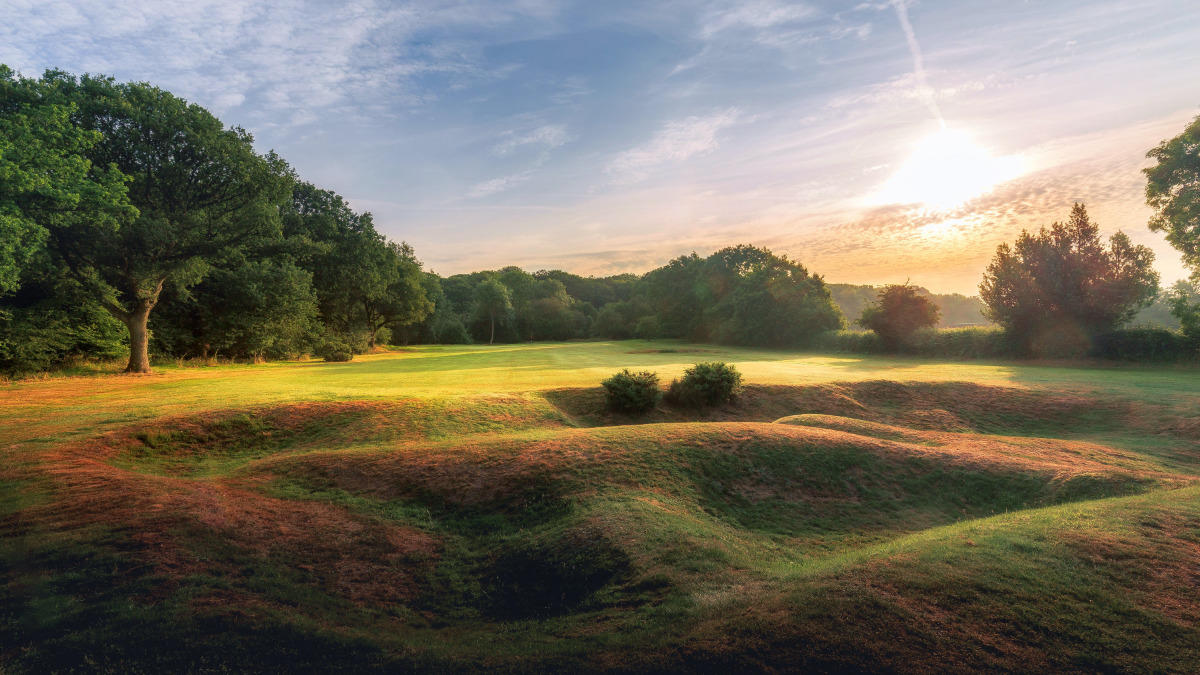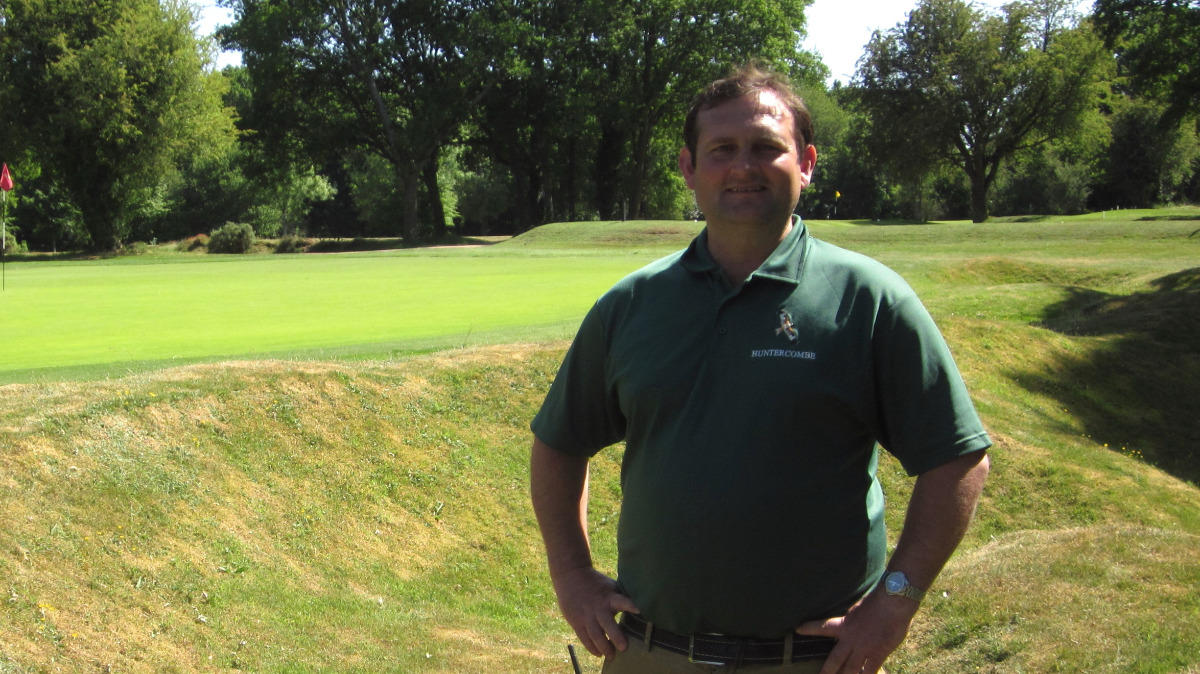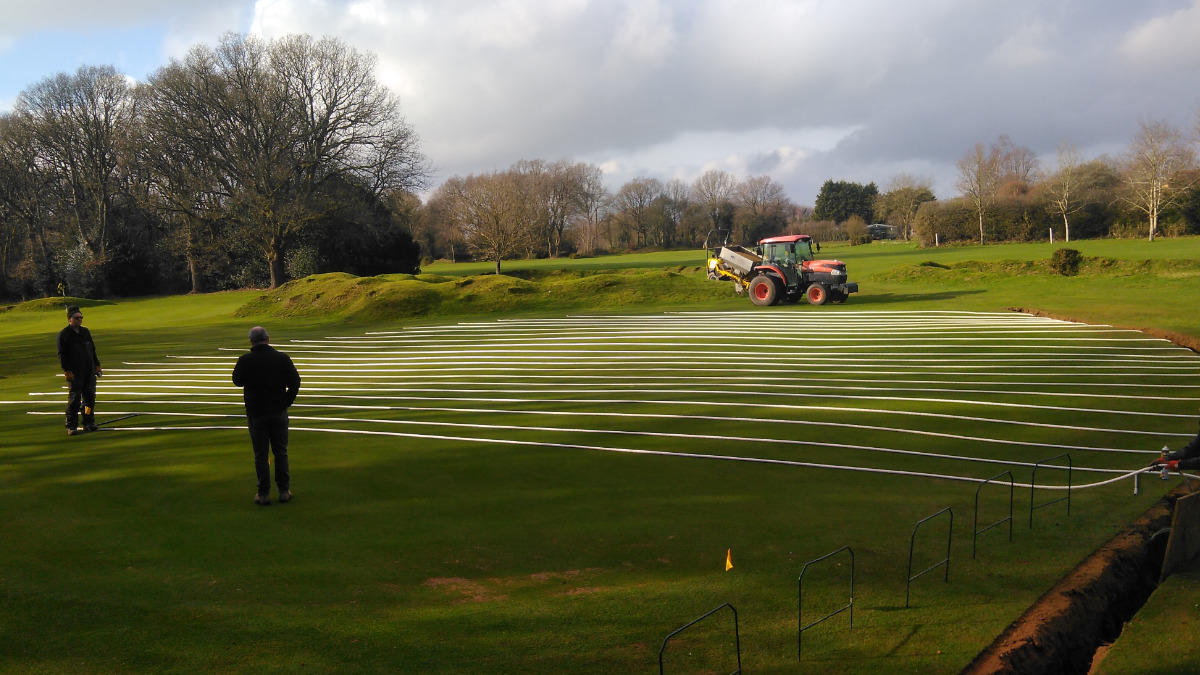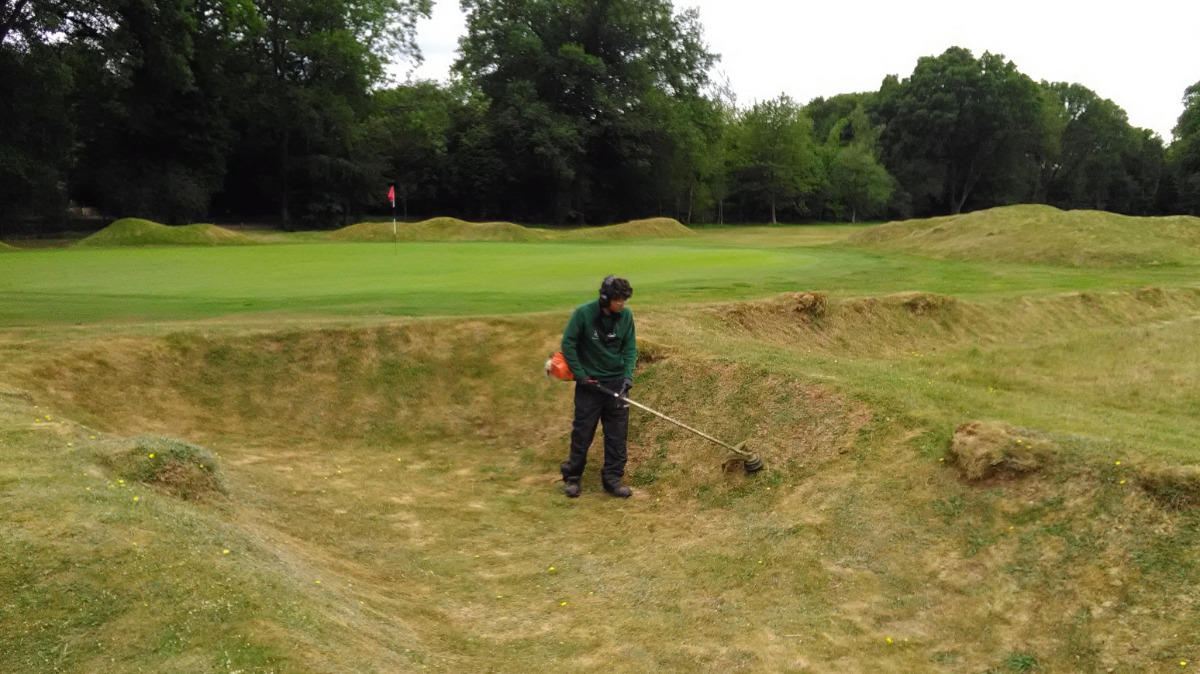- Homepage
- News and Features
- Challenges of a classic design at Huntercombe Golf Club
Challenges of a classic design at Huntercombe Golf Club

The course at Huntercombe is a rarity, since very few design changes have taken place since its inception over a century ago.
Most of the original shapes and contours on and around the greens have remained much the same and the club is keen for these to remain for future generations to enjoy.
I met up with Course Manager Grant Stewart to find out more about the challenges faced in maintaining this classic design and how these aspects impact members’ expectations.
Introduction and history
The common land on which the course is located sits at around 700 feet elevation in the Chilterns, north of Reading and west of Henley on Thames. The site was acquired by Chiltern Estates in 1900 by its owner and course designer Willie Park Junior. Play began the following year, similar to Sunningdale, which Park also designed.
This tract of common land required minimal clearance of gorse and other scrub to reveal an excellent content of natural, fine leaved grasses that provided ideal playing conditions. In fact, little or no seeding work was required and Park made use of the natural contours to form large undulating greens surfaces, some of which contain significant changes in elevation and place a premium on putting ability.
Throughout the site were the remains of numerous pits, hollows and mounds, where flint was excavated many years previously. Park used these as features around many of the greens, filling some with sand to serve as bunkers, while others remained as unkempt grass hollows.
Few trees existed on this exposed site at the turn of the previous century, but the thin layer of clay and loam overlying flint and chalk provided excellent natural drainage.
Nearly 120 years later, the course is now largely tree‑lined and contains only 13 sand bunkers, but the layout and style of the course remains largely the same and offers year‑round golf to an appreciative membership.

Strategic direction
Grant Stewart was appointed as course manager in 2016, having spent five years at Sunningdale as deputy course manager and fulfilling previous roles at Fairmont St Andrews and Moray, both in Scotland where he originates.
“Prior to my appointment, the club was keen to instigate a change in direction as to how the course was being managed,” Grant explained. “Tree encroachment, boundary issues, poor irrigation coverage and softer putting surfaces had over a period of time changed the very essence and quality of this course and the way it was being played. In effect, members wished to see a return to a more traditional style of course, which was what Park had originally created.”
With renewed strategic direction, the club enlisted the services of course architect Tim Lobb along with historical input from magazine editor Adam Lawrence. A course policy document was also produced with input from Grant, which gave him the mandate and a clear insight into the club’s vision and key objectives.
Key challenges faced
Grant explained how the first major change involved safety in regards to an adjacent property on the boundary of the 16th. Following input from Tim Lobb, the fairway was re‑aligned 30 metres left. ‘Park’ style mounding was introduced and there was additional tree planting, while teeing areas were re‑positioned and extended.
Internal out of bounds have been implemented as a temporary measure until trees reach maturity.
“These changes have worked well and the risk has been greatly reduced,” said Grant.
Another key challenge was to improve irrigation cover, which took place in 2017. The old Watermation system had been retrofitted with Hunter block valve sprinklers, but coverage was poor. A new Toro Lynx system was installed to greens and tees and along with a 150m³ glass‑fibre tank and pump house. The borehole is 170m deep and only yields 18m³ per day, therefore water management is essential and backed‑up from the mains supply was required.
Further investigation on a greater water supply is currently underway and this will determine whether or not the system can be extended in the future.

Agronomic Challenges
A key part of Grant’s remit was to improve the calibre of the main playing surfaces and primarily this entailed removing excess organic matter on the greens, which measured around 10%. This was reduced to 5% by twice annual coring using 10mm tines, intensive sand topdressing and reduced nutrient input. The team then overseeded with bent using the Dyno‑seeder attachments; applying around 5g/m² twice per year.
Grant said: “Slowly but surely we are reducing the content of Poa annua, while increasing the amount of bent, although each green varies. This is probably due to the growing environment and individual drainage performance. Improving the latter was my next challenge since not all the greens drained sufficiently well.”
Each of the greens were formed from the natural underlying soil, with a few areas built‑up to prevent balls running into the undergrowth.
On some areas of greens this has prevented natural run‑off, while hollows exist on others. To combat the significant undulations on many of these Park greens, which measure 1.7Ha in total, the club opted for Passive Capillary Drainage (PCD), which was installed at 1m centres, with outfall into one or more conventional perimeter drainage trenches.
Grant said: “Tackling two greens per year has proved highly successful and the disruption to playing levels takes about three weeks to recover. To date four greens have been completed with another six planned over the next three years.”
More general improvements have been made to the teeing areas. which are hand mowed and square cut for improved presentation. These will be re‑levelled and extended where necessary over the coming years as part of the course development plan.
Likewise the 13 sand bunkers which, although they perform adequately well, are not really in keeping with the surrounding hollows and mounding. This is a lower priority for the team but design changes will happen.
Fairways largely consist of a mix of indigenous fine‑leaved grasses, but compaction and a general lack of maintenance over a prolonged period has allowed meadow grasses to colonise in some areas. The underlying clay/loam soil has a pH of 6.7 and tends to dry out fairly quickly. »
“In the absence of fairway irrigation, I have alleviated the situation to some degree by applying a wetting agent programme and a foliar feed twice each year, while over‑seeding with a traditional mix annually,” said Grant. “The rest is down to whatever hand I’m dealt with and suffice to say that mowing so far this year has been minimal!”
Trees and the environment
While the main focus has been on turf management, another key requirement has been to tackle tree and scrub encroachment.
Historical photos indicate that many of the trees took hold after World War Two and have increased through natural regeneration ever since. This has led to a loss of sight lines and too many ball searches, while air movement has been restricted and the amount of shade increased.
The latter has a negative impact on clearing early morning frost, while also favouring weaker grass species.
Being on common land, the club requires agreement with South Oxford District Council before proceeding with a felling licence.
Small trees of a certain trunk width and general scrub are exempt and as much of these as deemed necessary can be cleared, although it is mainly a winter task. Grant has focused the team’s efforts around greens and tees on a few holes, but it’s an on‑going process.
“Areas where clearance has occurred have given us some wonderful displays of bluebells in the spring,” said Grant.

Willie Park ‘pots’ and greens
Huntercombe is probably best known for its rather unique use of humps, hollows and ridges which are present throughout the course and form part of many greens complexes. Locally they are referred to as Willie Park ‘pots’ and although many no longer contain sand, they still provide a formidable challenge to those who venture in. I was intrigued as to what impact they have in regards to maintenance and drainage. Grant explained: “Firstly they have minimal impact in regards to greens drainage, apart from where additional mounding was used to prevent ball run‑off.
“This is one aspect that we may reduce in future to create wider swales. In terms of regular maintenance, the wider base areas are cut with the Toro Sidewinder, while all other areas are strimmed. This is akin to painting the Forth Bridge and once we complete it we start again.
“Divot filling and their recovery can be challenging in the high use ‘pots’, while blowing leaves out of all 120 is necessary to maintain playability.”
The greens are also challenging for both golfers and the greenkeepers. The change in elevation on some, along with several two‑tier greens and some significant ridges and swales mean that water management is critical, meaning a lot of hand watering and ensuring that it is targeted where it is most needed.
The other main challenge is mowing, which is achieved with a greens triplex at 4mm HOC, but the greens are not striped. The team prefers to cut half and half, which is more akin to the method used when Ransomes Overgreens were used.
Pin positions were limited on some greens; hence the need for re‑introducing Park’s original size.
Grant added: “The two key aspects of playing Huntercombe are to putt well and drive straight. Very few golfers are able to avoid three putting, including myself!”
Summary
Huntercombe is certainly a unique top 100 course and serves as a reminder that what Park created a century or so ago still attracts many golfers as well as practicing course architects. It is not an overly long course but it doesn’t need to be.
Few greens anywhere in the country match the style at Huntercombe and as the putting surfaces become firmer and of better quality they encapsulate the spirit of real golf.
Full credit to the club and the sustainable direction they have embarked upon.
Laurence Pithie MG is a regular BIGGA contributor and visited Grant Stewart and his team at Huntercombe for this article, which was first featured in Greenkeeper International, the monthly journal of the British & International Golf Greenkeepers Association.
Tags
Author

Laurence Pithie MG
The first turf professional to attain BIGGA’s Master Greenkeeper status in 1991, Laurence also won Greenkeeper and Groundsman of the Year in 1984 and 1988.
